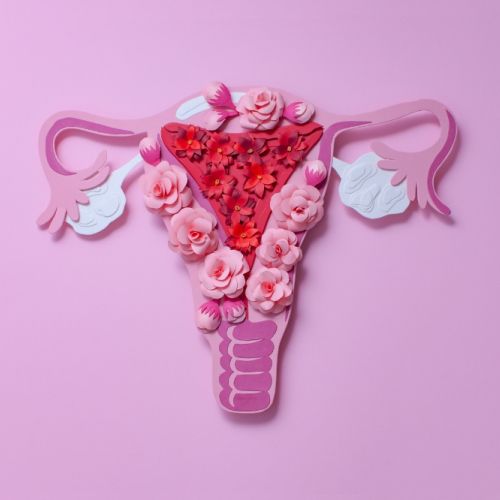Benefits of Preimplantation Genetic Screening

Couples undergoing fertility treatments may be asked whether they would like to have preimplantation genetic screening and diagnosis (PGS/PGD). It’s natural to wonder how PGS/PGD might benefit you and your future family.
At the California Center for Reproductive Health, our specialists Eliran Mor, MD, and Irene Woo, MD, can help you understand what the procedures are, how they’re performed, and the ways in which you can benefit.
What is PGS/PGD?
PGS/PGD is performed in conjunction with in vitro fertilization. In a standard IVF, embryos created in the laboratory are chosen for implantation into your uterus based on their visual quality.
With PGS/PGD, however, the doctors carry out testing that evaluates each embryo’s chromosomes to identify abnormalities. The preimplantation screening and diagnostics greatly improve the success rates of transfers, so you have a greater likelihood of carrying a pregnancy to term.
How does PGS/PGD work?
Following introduction of sperm to the egg, embryos form. They develop into blastocysts, consisting of 100-200 cells, by day five or six. Your fertility specialist removes 4-6 cells from the blastocyst and sends them to a lab for genetic screening. While we await results, we keep the embryos frozen, ready for implantation at the right time.
PGS checks for chromosomal normality, meaning the sample cells contain 46 chromosomes (23 pairs). Embryos with missing chromosomes or an extra chromosome are less likely to result in a successful, healthy pregnancy. PGD checks the embryos for genetic mutations that cause disorders like hemophilia and cystic fibrosis.
What are the benefits of PGS/PGD?
Chromosomal abnormalities are responsible for 50% (and perhaps more) of miscarriages in the first trimester. PGS/PGD identifies embryos without these abnormalities so we can use them for your IVF, thus increasing the likelihood that you’ll have a healthy pregnancy and baby. The procedure increases the chance of a healthy pregnancy regardless of your age.
Because PGS/PGD helps achieve higher pregnancy rates per transfer, you’re less likely to need as many cycles of IVF, which means less time, stress, and cost.
We can also help you achieve pregnancy with a single-embryo transfer, because we’re confident in the health of that embryo. This reduces the health risks and pregnancy complications that are associated with carrying multiples. These complications include preterm birth, preeclampsia, and abnormal placental function.
If you go through an IVF cycle and PGS/PGD doesn’t identify a viable embryo, you can start your next IVF cycle right away.
Who are the best candidates for PGS/PGD?
While PGS/PGD is an extra step in your IVF process, it’s well worth it as the procedure can reduce the risk of miscarriage and failed transfers.
While women of all ages going through IVF can benefit, PGS/PGD is especially helpful to women 35 and older. The risk of chromosomal abnormalities in embryos increases notably as you age.
If you have a history of recurrent miscarriage, PGS/PGD is also highly recommended. Our doctors discuss your health history and pregnancy history when helping you determine if PGS/PGD is right for you.
To learn more about preimplantation genetic screening and diagnosis as well as other valuable fertility services, contact us at the California Center for Reproductive Health. Call today or use the online tool to set up a consultation.
Eliran Mor, MD
Reproductive Endocrinologist located in Encino, Valencia & West Hollywood, CA
FAQ
What does a reproductive endocrinologist and infertility specialist do?
Reproductive endocrinology and Infertility is a sub-specialty of Obstetrics and Gynecology. In addition to managing medical and surgical treatment of disorders of the female reproductive tract, reproductive endocrinologist and infertility (REI) specialists undergo additional years of training to provide fertility treatments using assisted reproductive technology (ART) such as in vitro fertilization.
Reproductive endocrinologists receive board certification by the American Board of Obstetrics and Gynecology in both Obstetrics and Gynecology and Reproductive Endocrinology and Infertility.
When should I see an REI specialist?
In general, patients should consider consulting with an REI specialist after one year of trying unsuccessfully to achieve pregnancy. The chance of conceiving every month is around 20%, therefore after a full year of trying approximately 15% of couples will still not have achieved a pregnancy.
However, if a woman is over the age of 35 it would be reasonable to see a fertility specialist earlier, typically after 6 months of trying.
Other candidates to seek earlier treatment are women who have irregular menses, endometriosis, fibroids, polycystic ovary syndrome (PCOS), women who have had 2 or more miscarriages, or problems with the fallopian tubes (prior ectopic pregnancy).
What are the reasons we are having trouble conceiving?
Approximately 1/3 of the time cause for infertility is a female factor, 1/3 of the time a male factor, and the remaining 1/3 a couples’ factor.
At CCRH, we emphasize the importance of establishing a correct diagnosis. Both partners undergo a comprehensive evaluation including a medical history and physical exam.
Furthremore, the woman’s ovarian reserve is assessed with a pelvic ultrasound and a hormonal profile. A hysterosalpingogram (HSG) will confirm fallopian tube patency and the uterine cavity is free of intracavitary lesions. A semen analysis is also obtained to evaluate for concentration, motility, and morphology of the sperm.
Additional work up is then individualized to direct the best possible treatment option for each couple.
What is IVF? What is the process like?
In vitro fertilization (IVF) is the process that involves fertilization of an egg outside of a woman’s body.
The process starts with fertility drugs prescribed to help stimulate egg development. In your natural cycle, your body is only able to grow one dominant egg, but with stimulation medication we can recruit multiple eggs to continue to grow. After about 8-10 days of stimulation, the eggs are surgically retrieved and then fertilized with sperm in a specialized laboratory. Fertilized eggs are then cultured under a strictly controlled environment within specialized incubators in the IVF laboratory for 3-5 days while they develop as embryos. Finally, embryos (or an embryo) are transferred into the uterine cavity for implantation.
Should I have IVF?
Before deciding if IVF is the right choice, it’s important to sit down with an REI specialist to discuss available treatment options. For some people, other methods such as fertility drugs, intrauterine insemination (IUI) may be the best first choice treatment. At CCRH, we believe each individual couple is unique and not everyone needs IVF.
Is the IVF procedure painful?
While not painful, the fertility medications may some side effects including headaches, hot flashes, mood swings, and bloating. The injection sites may also bruise.
Will IVF guarantee a baby?
Unfortunately, no. Many people think once they start IVF it’s a matter of time that they will be pregnant and have a baby. But according to national statistics per the Society of Assisted Reproduction (SART), on average 40% of assisted reproduction cycles achieve live births in women under age 35. The chances of success then continue to decrease with advancing age.
At CCRH, we employ only evidence-based interventions to ensure patient safety and optimal outcome. While we cannot guarantee a baby, we guarantee that you will receive the best, most advanced, personalized care to help you maximize your chance of a baby.
What is the success rate for IVF?
The average IVF success rate (success measured in live birth rate) using one’s own eggs begins to drop around age 35 and then rapidly after age 40. This is due to the decline in egg quantity and egg quality as a woman ages.
Our clinic’s success rate consistently beats the national average year after year.
Do insurance plans cover infertility treatment? How much does IVF cost?
Individual insurance plans often do not have any coverage for infertility treatments. If you have a group plan, you can call members services to see if they have coverage for infertility (including consultation/workup and IVF).
After your consultation with our REI specialist, one of our dedicated account managers with sit with you to go over the cost of treatment.




